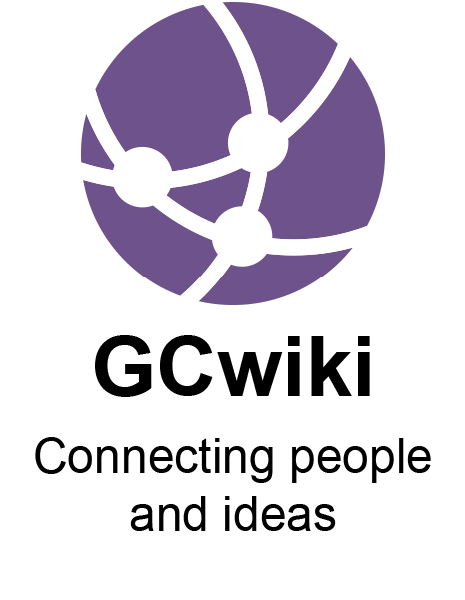Important: The GCConnex decommission will not affect GCCollab or GCWiki. Thank you and happy collaborating!
Reduce the ROT Challenge
Breadcrumb trail: Web Standards > UXWG > Projects > Reduce the ROT Challenge
| This is good stuff. Really good stuff. |
The idea for a Reduce the ROT (Redundant, Outdated and Trivial) campaign (en français: RID (R: Redondant, I: Insignifiant, D: Dépassé)) was presented at the Web Managers' Council meeting on September 14th, 2010. The impetus for this campaign was taken from content strategist Coleen Jones, based on her 2007 blog post on content analysis.
With three Web Standards replacing the Common Look and Feel Standards, departments are looking for implementation guidance. The UXWG would like to bring attention to best practices for managing content with a focus on evaluating and improving what's online now in order to keep costs as low as possible.
There are about 10 million pages on the .gc.ca network - it's time to trim the fat. Our aim is to help departments implemente the Web standards and guidelines by reducing the amount of content to manage.
Reduce the ROT Guidebook
Appendices / Annexe
- Appendix A - Appendix F included in the Guidebook
- Appendix G: Guide to effective web writing presentation
- Appendix H Web Content Accessibility Guidelines 2.0 reference guide
- Appendix I:ROT overview presentation
- Appendix J: Sample Process Map
Reduce the ROT Support Group
ROT (Redundant, outdated, trivial content) Reduction sessions were held on July 20, July 28 and October 25th. Over 250 public servants attended from close to 50 departments. See who attended via the registration page (Previous session registration can be view via the history tab.
Have you started to reduce the ROT? Found some tricks or roadblocks? We want to know how you're doing. Share your story in the Reducing the Redundant, Outdated and Trivial (ROT) Community on GCForums
Reduce the ROT.gc.ca Steps and Success Stories
| Step | Detail |
|---|---|
| Step 1:
Complete a Content Inventory |
You have to know what you have in order to keep it current. Every page needs a content owner and a review date. How can departments create an inventory of all their web pages? |
| Step 2:
Evaluate and sort content |
Does content need to be removed just because it's old? How is 'relevant' defined? These are the kind of decisions that each department needs to determine in order to manage their content effectively.
|
|
Step 3: Archive out-dated content |
Content that is no longer relevant should be archived, not deleted. Most departments will find it necessary to develop a Content Lifecycle policy or guidelines that describe how long documents are kept and how often they are reviewed. |
| Step 4:
Re-write, Re-organize and Re-publish |
If content is still relevant, it may need to be re-written or re-coded to adhere to Web Standards. If it's okay, the review date should be updated. With reduced content, you may need to re-organize what's left. Find out how. |
| Step 5:
Develop a governance framework and set editorial policies for your website. |
Needs your input...
Prevent future ROT by defining how decisions are made about their web presence and who has authority in order to ensure content remains relevant and up-to-date. |
Benefits
- Easier for client to find what they're looking for - studies of content usability typically find that removing half of a website's words will double the amount of information that users actually get. Source
- By reducing the amount of content on your website, you will reduce the time it takes and cost of updating your site to be compliant to the new web standards
- Fewer resources required to modify content to be compliant with updated web standards
- Less content to manage
- Improved service delivery
- Improved perception of the organization
Measure Success of Reducing the ROT
Measure success by determining improved efficiency, effectiveness and/or client satisfaction of your site.
Efficiency: Consider the percentage decrease in time (and therefore money) it will take to update your site to meet the new web standards. If you currently have 10,000 pages, and you reduce this number by half, you're also reducing the time and cost of changing it.
Effectiveness: Studies of content usability typically find that removing half of a website's words will double the amount of information that users actually get. Source
Client satisfaction: Want to know if your site is better? Ask your clients. Let them know in advance that it'll be changing or make a link to email the webmaster prominent on your home page or feedback page.
The reduction of ROT content should be an ongoing activity in government departments. While this challenge will not be an official component of CLF reporting or evaluation for departments, we should nonetheless try to find some ways by which we could measure its uptake, success etc.
Committed to Reducing the ROT?
Are you committed to reducing the ROT on your website? Add the userbox to your GCPEDIA profile page like Martha:
| 75px | This user is committed to reducing the ROT! |
What are people saying about the Reduce the ROT.gc.ca challenge?
- Reduce the ROT (or Not) blog post by Peter Smith
- Of rot and puffery by Jane Stewart
- What your colleagues are saying about their ROT.gc.ca challenge experience...
| This page was created by the User Experience Working Group in development of the new Standard on Web Usability. We encourage open collaboration, please visit our discussion pages and add your comments. |
